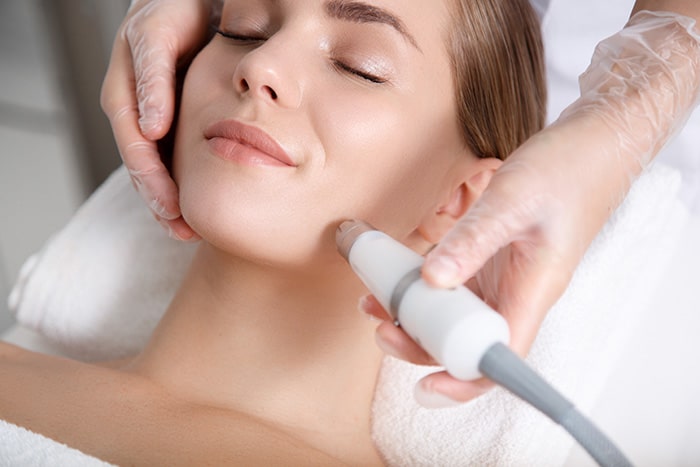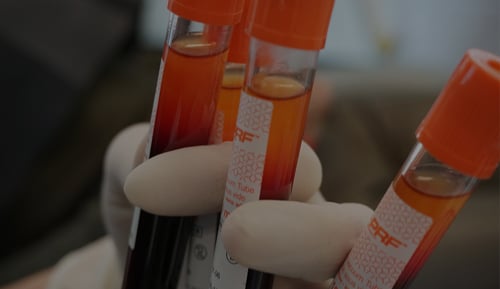
Photography is an essential component of medical aesthetics to evaluate and track changes over time following therapy and/or aging. This becomes even more critical in the field of facial esthetics where patient demand and expectations are continuously rising and patients seek the ‘youthful look’. Treatment with platelet rich fibrin (PRF) is known to encourage a natural look by stimulating new tissue regeneration by supplying soft tissues with a slow and gradual release of growth factors. This is opposite to other facial esthetics modalities such as fillers or Botox where a more instantaneous change in facial features is encountered following treatment (providing the patient a more immediate gratification). For these reasons, photography becomes even more essential while undertaking therapy with PRF to evaluate progress over time with before and after photos.
Medical photography is a means to accurately document patient features/conditions utilizing a device to capture an image or video. Photography has been utilized in medicine for over a century and even prior to, medical drawings and illustrations were considered a norm to portray disorders/changes to various medical conditions and transmit new information to colleagues. Today, medical photography has increased in popularity and its essential use in modern medicine is not only highly recommended, but in some fields an absolute necessity. The field of facial esthetics and facial rejuvenation balances a fine line between medicine and cosmetics and for these reasons, it is the authors policy that all doctors adhere to strict protocols when it comes to documenting facial esthetic procedures.
Simply put, photography is important to document cases over time. Naturally, patient files should be stored in secure places and digital files backed up at least in one area (ideally two). Photography can also serve many other functions. Well conducted photography can improve case acceptance since incoming referral and new patients can visualize before and after photos performed within the office and supply the treating clinician with much credibility and trust. Photography is also useful to facilitate treatment planning, monitor overall progress over time, research and optimize techniques, as well as improve office marketing.
Unfortunately, in the field of facial esthetics, there is an ever-growing number of ‘failed’ procedures/protocols/devices owing to the number of low-grade products (for example the number of bargain facial fillers routinely brought to market) resulting in lawsuits and negativity towards the field. Furthermore, with the increased visibility of facial rejuvenation procedures being performed by virtually all celebrities in modern culture, patient expectations have also increased tremendously. It is therefore anticipated that some patients will demonstrate some resistance following treatment, expressing that little to no effect/benefit was observed over time. Patients forget fast and photography therefore becomes essential.
Naturally, the most effective method to transmit information regarding changes to facial features is by properly and adequately documenting before and after photos in a photography series. This becomes particularly important when regenerating tissues with platelet rich fibrin (PRF) since it is expected that a slow and gradual change is expected over time, unlike the instantly gratifying result that may be observed with facial fillers and/or Botox.
General requirements
Without going into much detail, prior to any procedure commencing in a medical office or cosmetic spa, collection of all relevant patient medical history is essential. All treatments carried out must continuously be well documented in each specific patient file, even if utilizing a totally natural regenerative approach such as with PRF. Even though no adverse reactions have been documented in the literature to date with PRF, it is always essential to provide an array of possible treatment options with a full consultation that includes discussion over the relevant risks and potential complications with respect to each treatment option prior to commencing any procedure. A written informed consent is also a requirement for all facial procedures performed.
Ideally, photography for facial esthetics should be performed in a dedicated space or room within the office. This will greatly assist in taking uniform photos over time as the image distance at which it is captured, flash settings (both intensity and length), camera lens settings, as well as a variety of other options found in digital photography can be fixed, stationary and therefore reproducible. Unfortunately, many practices do not function in such a manner and slight changes in any of the above-mentioned parameters (especially lighting), can have a drastic and marked impact on the final photograph. We therefore discuss preferences in facial photography utilized by medical practitioners as well as feature some of our personal preferences and setups.
Camera and lens
An array of cameras is available in today’s market and often difficult to decipher the advantages and disadvantages of each. While digital compact cameras were once utilized as an easy to use photography device with pre-programmed image modes, they have limited applications in facial esthetics since they are incapable of utilizing indirect flash. Instead, clinicians should be keen on purchasing a digital reflex camera (a modern 20-30 megapixel model with low noise at 100 ISO speeds for least noise with excellent detail and the greatest ability to reproduce detail in the brightest and darkest areas being photographed) which offer numerous advantages including: 1) ability to include indirect flashes (multiple), 2) high optical performance, 3) ability to change lenses, and 4) ability to attach special accessories. Ideally the clinician should test various systems prior to purchase by taking long and close-up photos of skin areas.
Lighting
Lighting can also be complicated since every light source has different color temperatures, with differing effects on color reproducibility. We highly recommend using the settings given in this book to assure proper photography. Using the camera/flash settings given in the instruction Table will insure proper color balance and exposure, i.e. keeps room lighting out. This will minimize and negate interference from room light.
Taking the photographs
Photography should ideally be taken in a dedicated office space where lighting, patient position, and distance to the camera can be controlled and reproduced predictably. This is an excellent starting place for new medical providers who wish to jump into facial esthetics for the first time with limited space requirements (8-10 feet total).
Documentation series
The photo documentation series is one of the first and most important steps during acquiring new patients for facial esthetics. Shortly following the information session and a thorough review of the informed consent sheets, the patient is then asked to remove makeup and prepare for a series of facial photos for the first time aimed at revealing potential problematic areas. It is important to remember to plan a first appointment accordingly with an appropriate time slot dedicated for the patient’s early enquiry stage. This is true even and especially in patients expressing an interest in facial esthetics as it allows the patient’s concerns to be explored comprehensively and completely in a professional manner. The ability to take patient concerns, be able to provide a documented photo series with the ability to enlarge images, makes this a highly effective approach (especially in offices that can show before and after photos of troubled patients that were effectively treated for similar issues). In the facial esthetic field, it is also a benefit not to rush this first appointment as typically patients that enroll in facial rejuvenation programs are long-term clients. Therefore, if the treatment outcome initially satisfies the patient, the opportunity then exists to create a solid and long-lasting patient relationship. Furthermore, a positive treatment outcome will surely growth by word of mouth, representing the ideal form of practice growth.
Marketing with photography
A picture tells a thousand words. ‘Before and after’ photos of patients treated with various modalities in facial esthetics is one of the most effective means to market one’s skillset. For this, the PRFEDU facial photography series is a highly valuable commodity since individual photos may be utilized for marketing purposes should the patient provide signed consent. These may and should be utilized in professional brochures and/or leaflets that are displayed and handed out in the practice waiting room. This a great way to present new technologies to incoming patients who may not be familiar with each technology present within the practice.
One successful modality highly effective in today’s modern world is the use of waiting room TVs to showcase cases treated within the office. Rotating before and after photos is a highly effective tool to increase patient acceptance rate and improve incoming new clients. Furthermore, infomercial-type interviews with doctors discussing new office techniques is also an excellent way to educate patients effectively on new therapies offered within the office. This allows for professional delivery of new material and information within the office.



